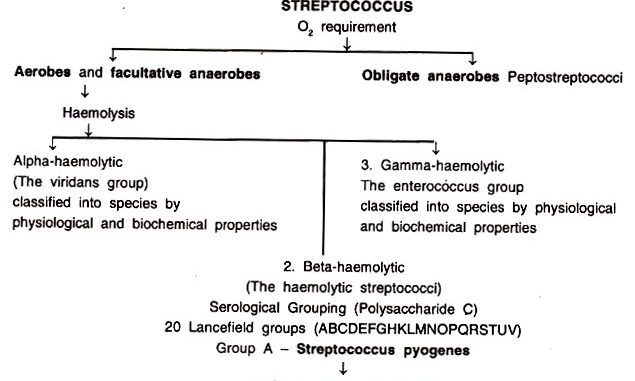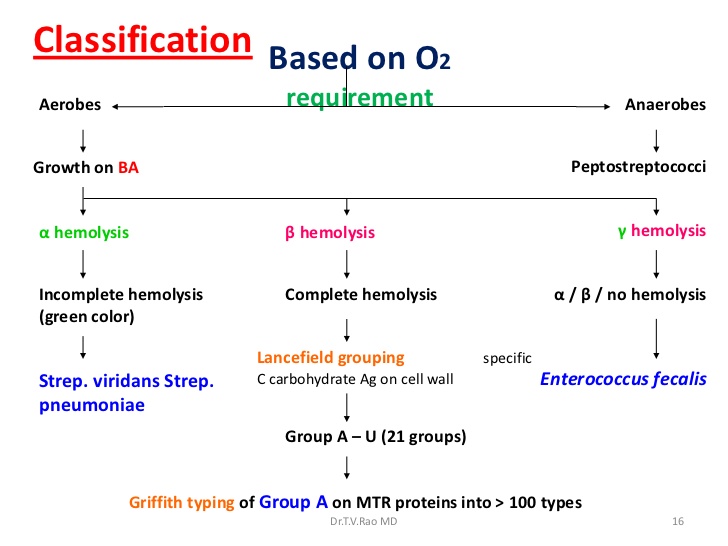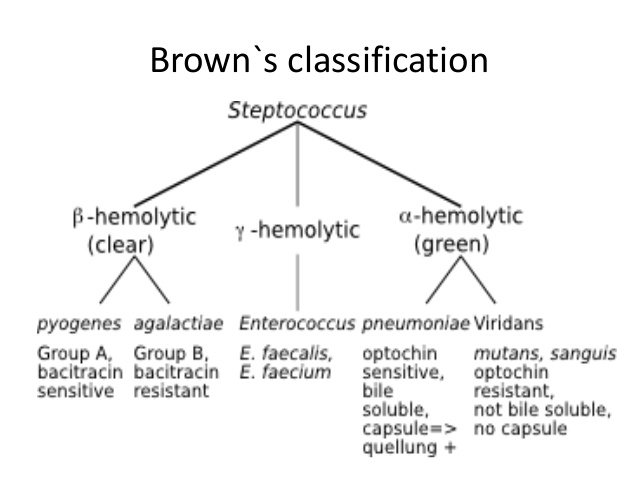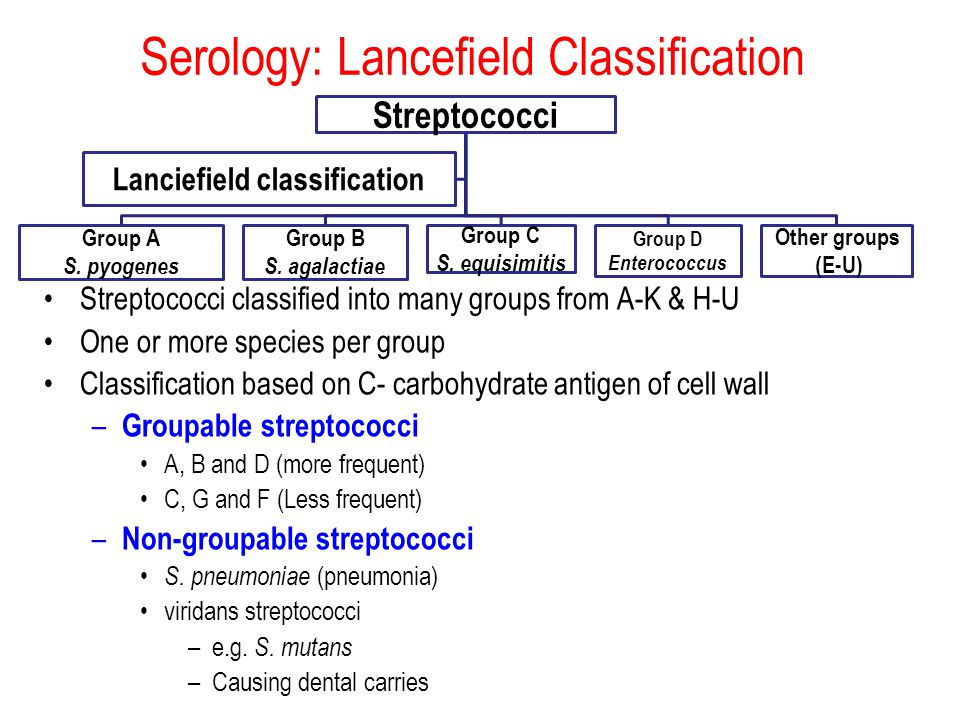
Classification of Streptococcus
- Classification on the basis of Oxygen requirement
- Brown classification; on the basis of haemolytic pattern on sheep blood agar
- Shermann’s classification; on the basis of physiological characteristics
- Lancifield classification; serological classification
- Biochemical classification
- Classification on the basis of 16s rRNA sequence

1. Classification on the basis of Oxygen requirement:
i. Aerobic or facultative anaerobes: eg. Streptococcus spp
ii. Obligate anaerobes: eg. Peptostreptococcus
2. Brown classification: On the basis of haemolytic pattern on sheep blood agar.

i. Αlpha-haemolysis group:
- Form incomplete haemolysis on blood agar
- Shows greenish discoloration around colony and persistence of some unhaemolyszed RBCs.
- Streptococcus pneumoniae, Viridians streptococci
ii. Βeta-haemolysis group:
- Form complete haemolysis on blood agar
- Give 2-3 mm diameter zome of haemolysis
- Streptococcus pyogens
iii. Non-haemolysis group
- Does not cause haemolysis at all
- These are non-haemolytic group
- Streptococcus faecalis
3. Shermann’s classification: on the basis of physiological characteristics
i. Pyogenic streptococci: Streptococcus pyogens
ii. Lactococci
- Found in dairy products
- They are non-haemolytic group
- eg. Lactoccus
iii. Enterococci:
- They are normal flora of human intestine
- Enterococcus
iv. Viridans streptococci
- They are normal flora of upper respiratory tract of human
4. Lancefield classification: serological classification

- This classification is based on the difference in the structure of cell wall carbohydrate ie. group specific polysaccharide antigen. Most strain of β-haemolytic group and some strain of α- hemolytic and non-haemolytic group are classified on the basis of cell wall polysaccharide.
- Streptococci are classified into 20 lancifield group from A to V except I and J.
Group A; Streptococcus pyogens
Group B; Streptococcus agalactiae
Group C; Streptoccus equi
Group D; Enterococcus
other (group E to V)
- Group A streptococci ie. S.pyogens is further sub divided into approximately 80 serotypes by Griffith according to their specific surface protein (M, T and R). M-protein is the most important one.
- The pathogenicity of Streptococci depends on the presence of hyaluronic acid capsule and surface M-protein.
5. Biochemical classification:
i. On the basis of sugar fermentation test;
- Streptococci ferments most sugar with production of lactic acid but no gas.
- Accumulation of lactic acid in media terminates bacterial growth.
- Streptococcus pyogens do not ferment ribose and they give PYR test positive.
ii. On the basis of production of certain enzymes
iii. On the basis of antibiotic susceptibility test
iv. On the basis of colony characteristics on different media
v. On the basis of haemolysis pattern
6. Classification on the basis of analysis of 16s rRNA sequence
i. Pyogenic group: eg. Streptococcus pyogens, S. agalactiae
ii. Anginosius group; eg. Streptococcus anginosus, S. intermedius
iii. Mitis group: eg. Streptococcus mitis, S. pneumoniae
iv. Salivarious group: eg. Streptococcus salivarious, S. thermophiles
v. Bovis group: eg. Streptococcus bovis, S. equines
vi. Mutans group: eg. Streptococcus mutans, S. ferus
